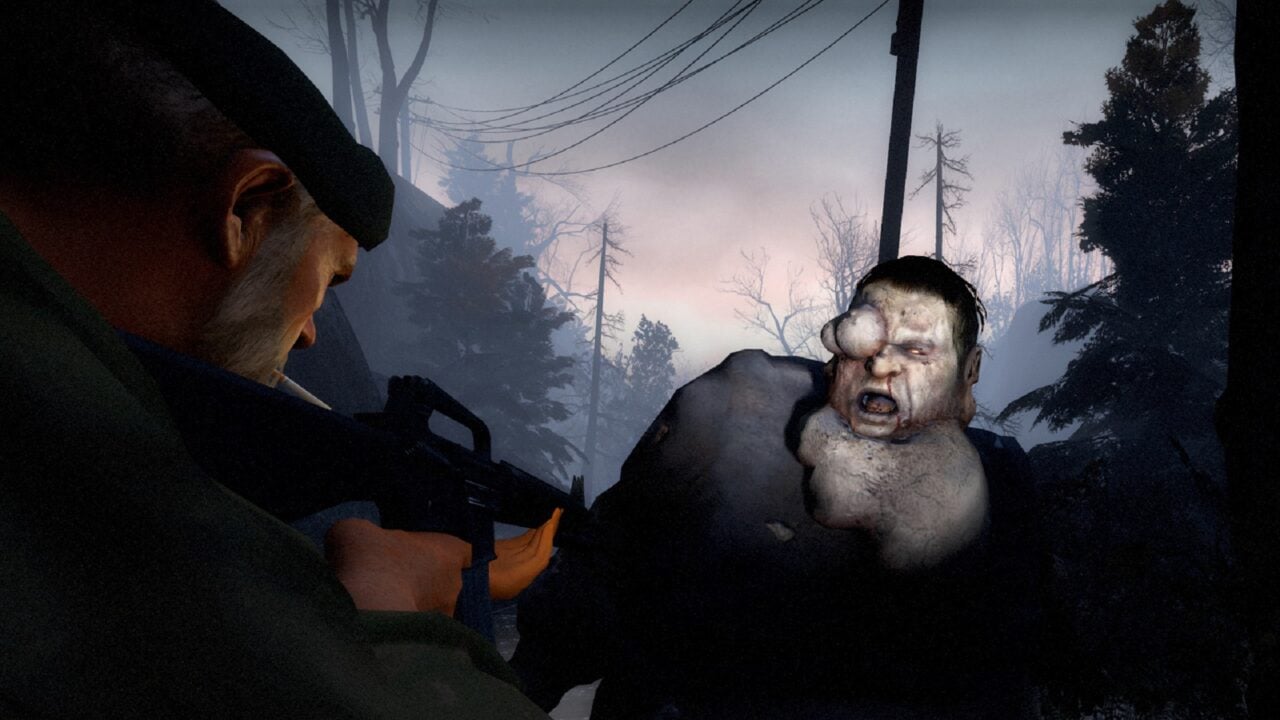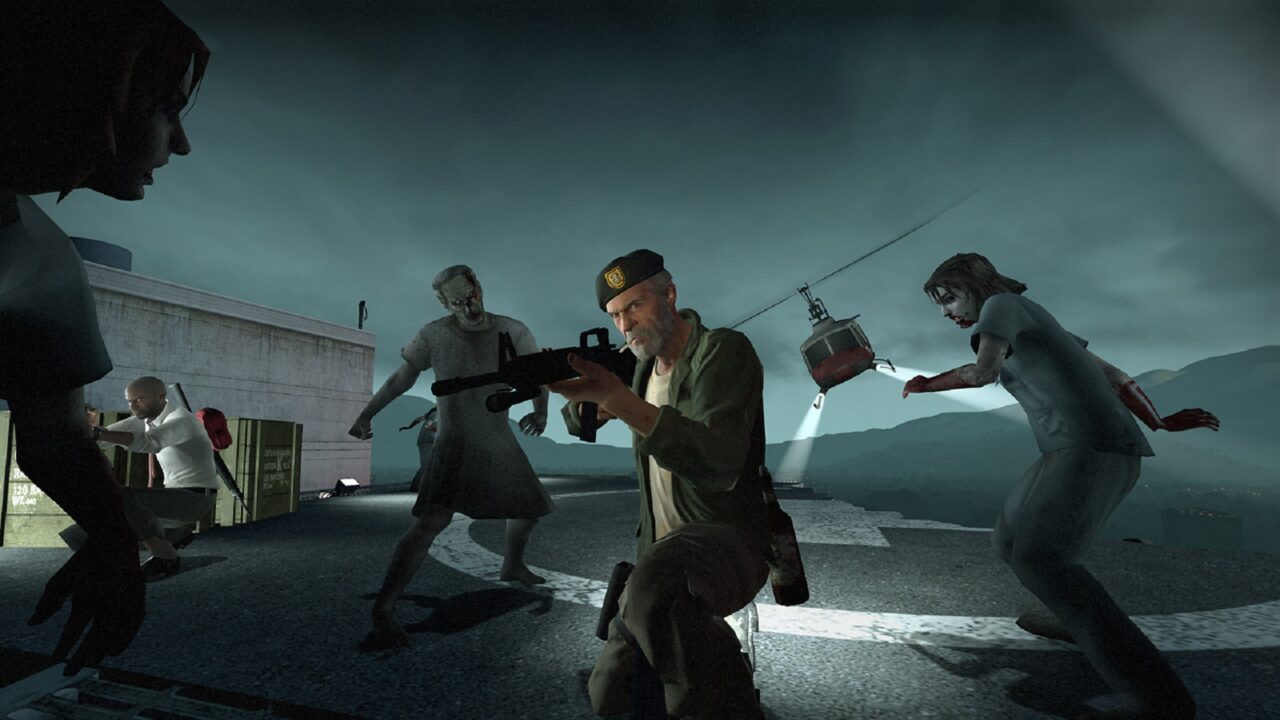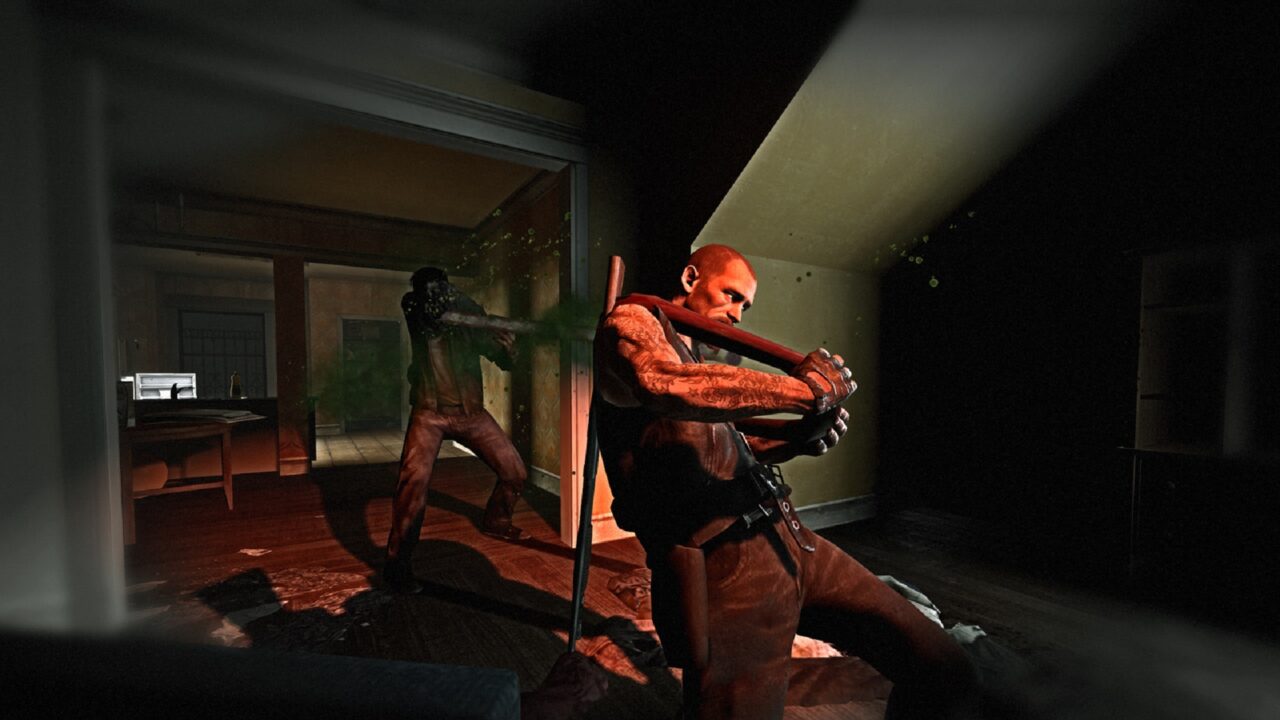Monster Mania: Left 4 Dead’s Special Infected Are Perfected Simplicity

Monster Mania is a weekly column celebrating the unique and varied monster designs in horror gaming.
Left 4 Dead couldn’t be a more straightforward shooter on paper. The player and up to three friends fighting through zombie-infested maps searching for safe houses are about as straightforward as objectives get. And yet, despite the game’s simplicity, 15 years later, Valve’s Left 4 Dead remains one of the most influential horror multiplayer games ever made, thanks to the game’s industry-setting standard approach to special infected.
One of the series’ most notable features is its A.I. director. The director lovingly throws a wrench into the player’s best-laid plans whenever there is a lull in the action, or the player is tearing through zombies at a pace that the director deems unacceptable. In these moments, the director will throw an overwhelming horde of runner zombies or one of Left 4 Dead’s several special infected at the survivors.

On the special infected roster is the bulbous Boomer that explodes on death and spews acidic bile that attracts hordes. The Smoker utilizes its massive tongue as a fishing hook to drag survivors away from their group, dangling them in harm’s way. There’s the ferocious Hunter who leaps great distances and pins survivors to the ground, immobilizing them. The Witch will swarm any survivor that disrupts her slumber, dealing massive damage. And finally, the Tank, which does what tanks do best, obliterates everything in its path by hurling debris or swatting survivors like flies across maps. For any of our Gen Z readers who might be thinking, “Uh, those special infected sound like zombies found in every other horror game… What’s the big deal?”
The big, defining deal is that Left 4 Dead was the trendsetter of these special zombified classes. And while there have certainly been multiplayer horror games that have managed to build upon these staples, even recent spiritual successors continually fail to rekindle the game’s multilayered simplicity.
Without fail, the A.I. director will spawn the ideal special infected to ambush and disrupt the survivor’s plans at the right moment, continually providing a challenge that keeps survivors on their toes. A player distracted by a tasty bottle of pills is momentarily separated from their group and becomes a sitting duck for a Hunter waiting on a nearby rooftop. A survivor pauses to reload, rounding a corner, only to face a Boomer who covers them in the warm blanket of bile. Or perhaps a group made mince meat out of the last horde the director sent their way, so the director plops a tank directly in front of the nearby safe house. Sowing these seeds of destruction fueled the anecdotal nature of Left 4 Dead’s gameplay.

While the utilization of special infected by the A.I. director was notable even in single-player, special infected design was perfected with the Left 4 Dead’s competitive multiplayer. The checks and balances approach to player-controlled special infected gave Left 4 Dead’s competitive play a more strategic approach than your run-of-the-mill multiplayer shooter.
Special infected such as the Boomer or Smoker can be killed in just a few shots, meaning players would have to hug the shadows, meticulously picking their moment to ambush survivors. There were few things as satisfying as ambushing a group of survivors as a Boomer and either detonating oneself or covering them in bile, not only obscuring their view but summoning a horde that would descend on the now panicking opposing team.

As teams comprised of four players, the ways in which infected could pair their abilities to develop new strategies for killing survivors provided more tactical options.
Using a Smoker to constrict a survivor while fellow infected swiped and slashed at them, or a Boomer exploding near a car could push players back while summoning reinforcements. Branching off from your group to hunt survivors, or pairing off and hunting in pairs, allowed infected to dominate on maps with multiple avenues of potential success.
The balancing act of empowering infected with these pristine ambushing abilities while saddling them with respawn times never allowed the scale to tilt too far into either side’s favor. Respawn times reinforced the idea that infected players must pick their moments to strike, rather than a bull in a china shop approach to attacking survivors…That is, until the Tank shows up.
The A.I. director will periodically allow a single infected player to spawn as a Tank. These moments are typically tied to set pieces, though no matter the circumstance, the arrival of the Tank is one hell of a showstopper. This powerhouse in the hands of an experienced player can be the kiss of death for even the most precautious group of survivors, especially when deployed alongside a squad of special infected that thrive within the chaos created by this yoked monstrosity.
While just one year later, Valve would release Left 4 Dead 2, which included new weapons, abilities, and monsters (which will be covered in another column), which were greatly appreciated, the sequel reinforced rather than rewrote the phonemail groundwork of the original.
For more horror game reviews, opinions, and features, check out DreadXP.
Categorized:Editorials

